
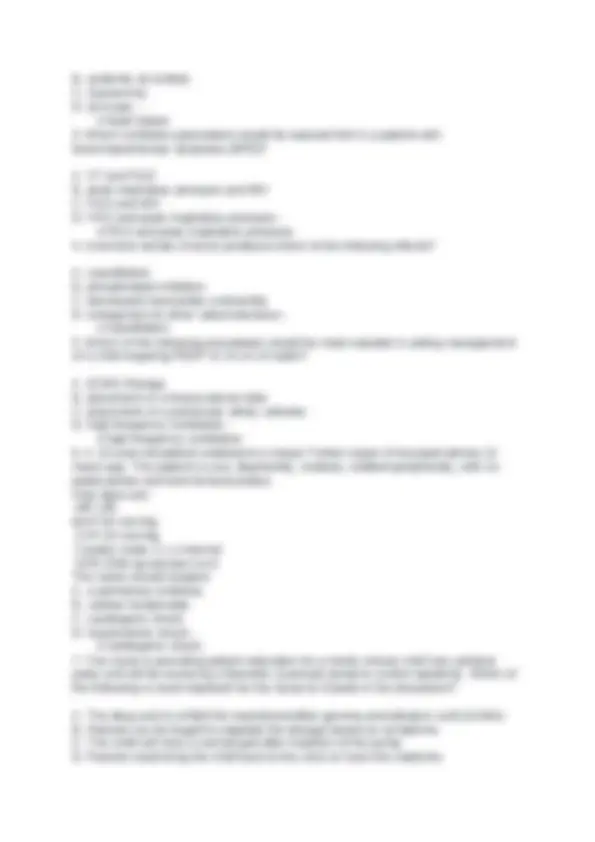
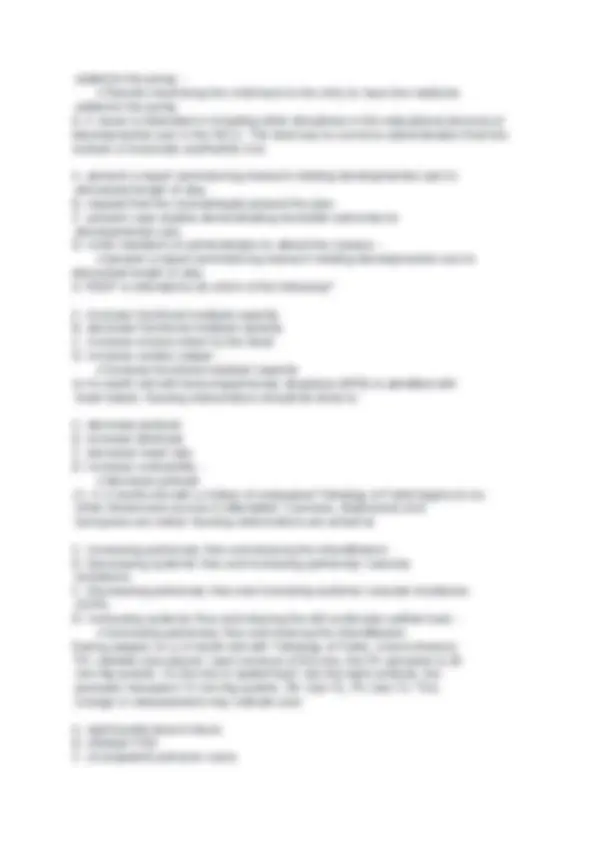
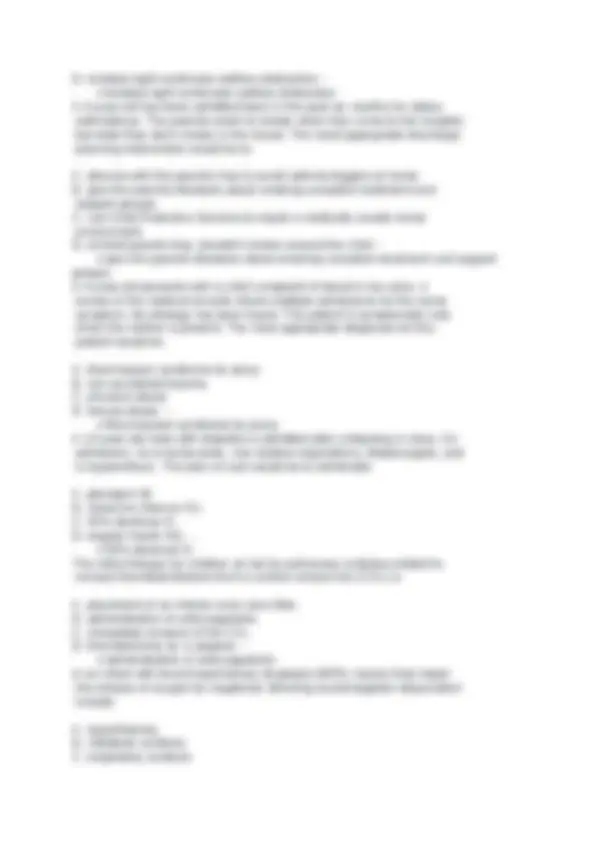
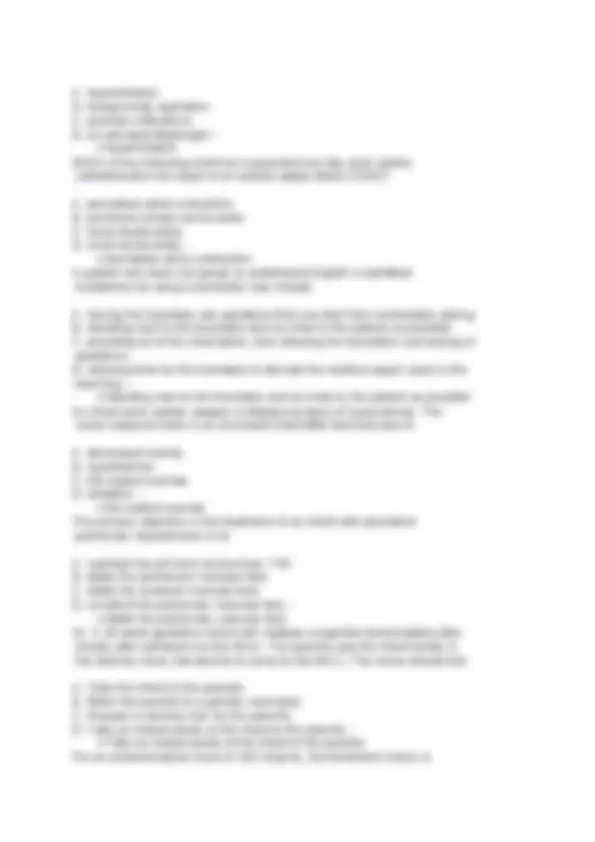
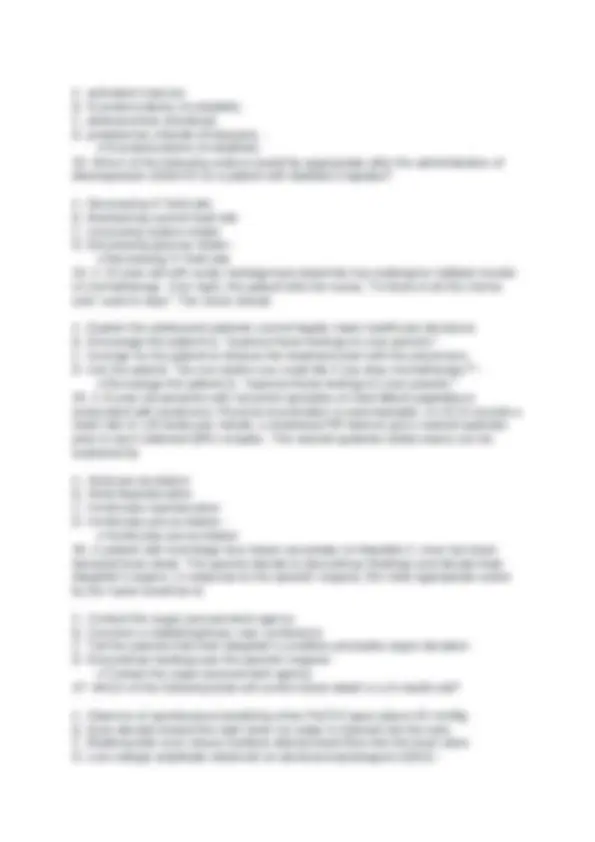
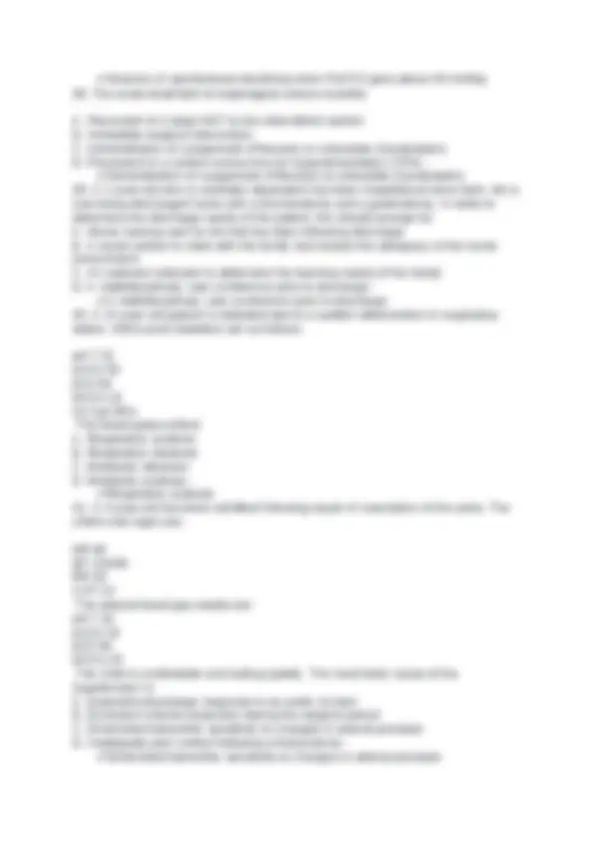
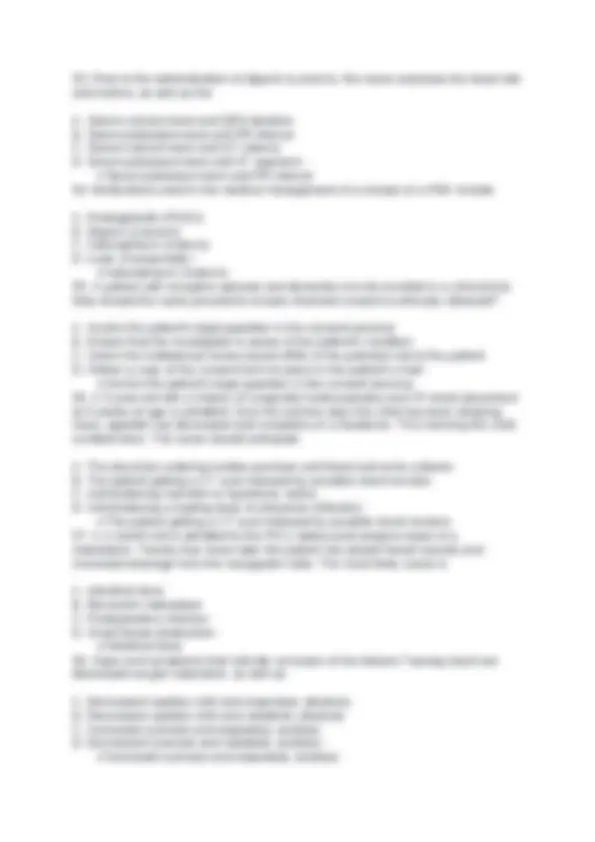
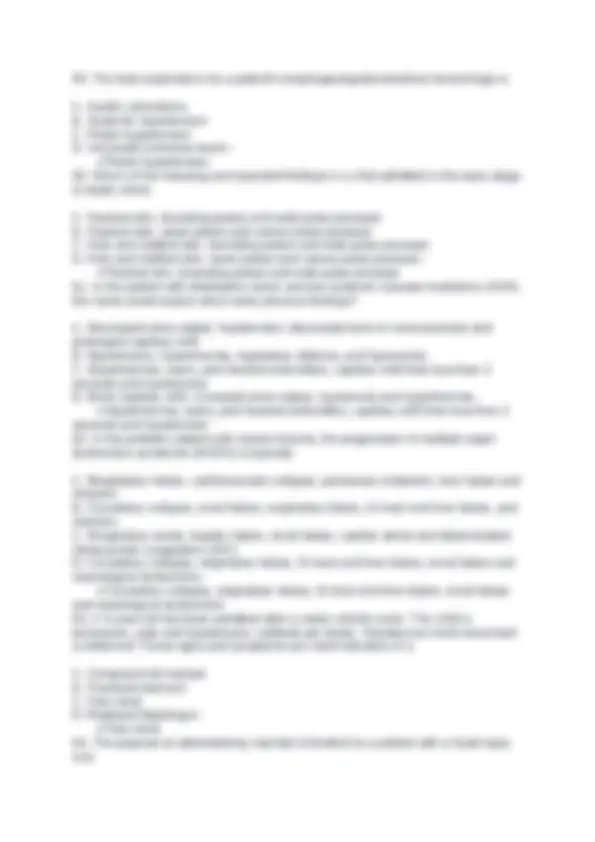
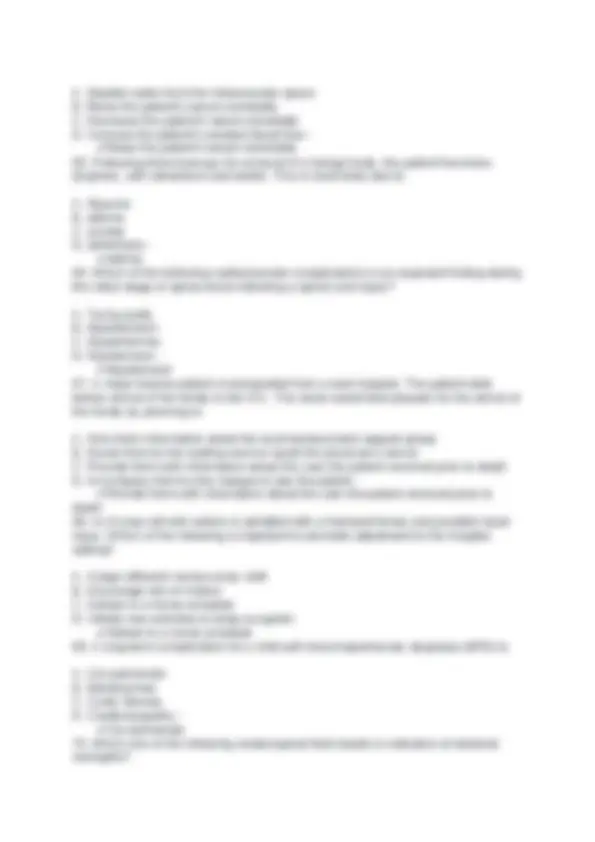
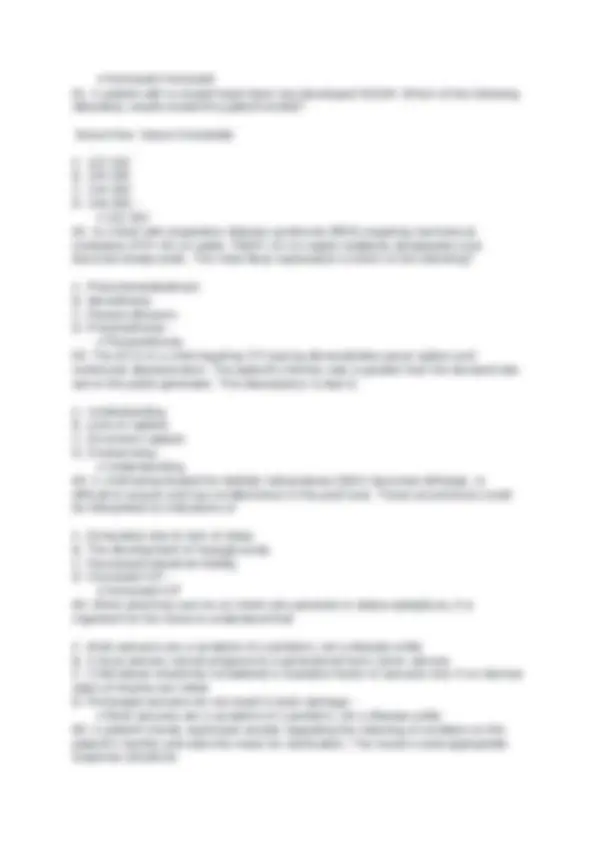
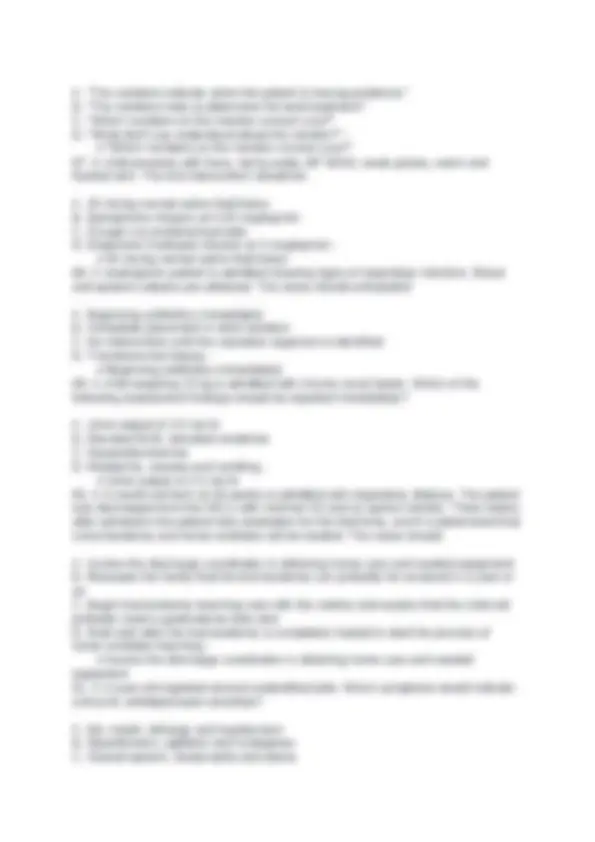
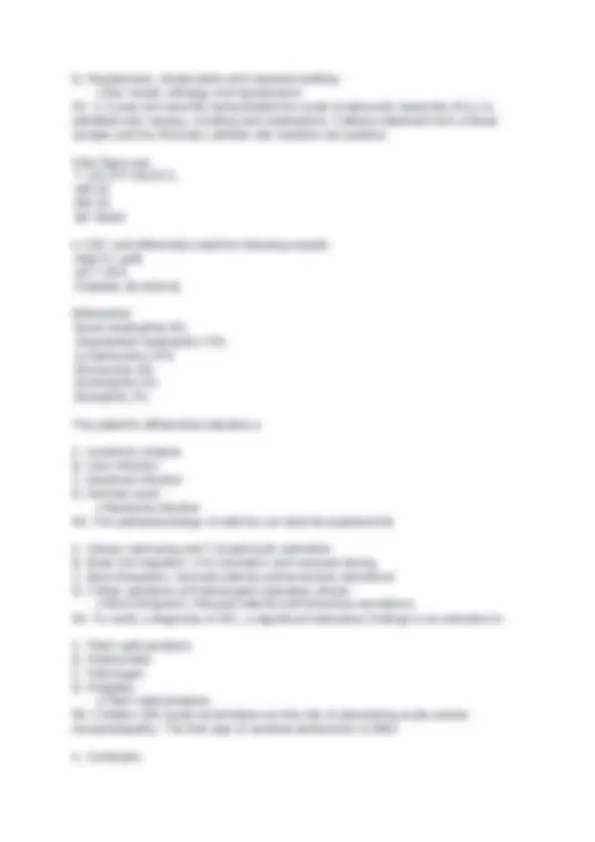
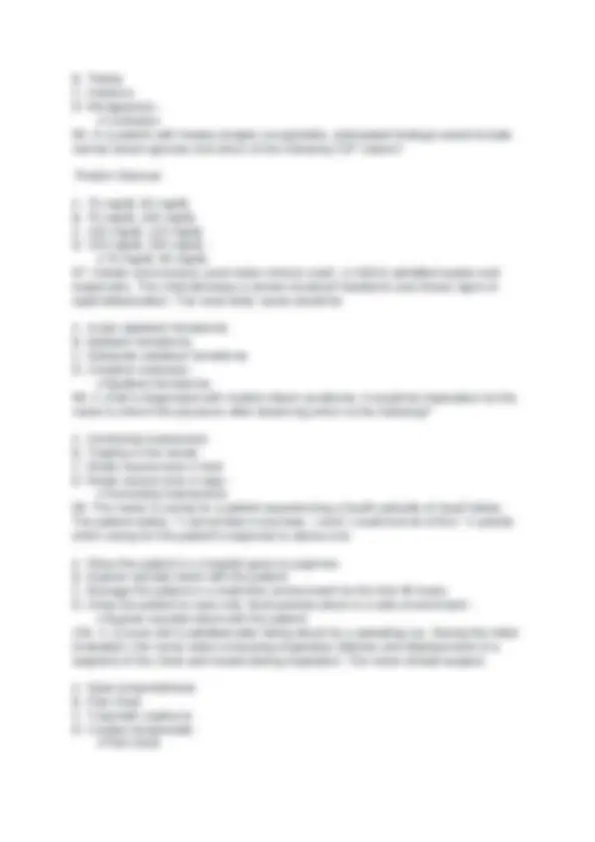
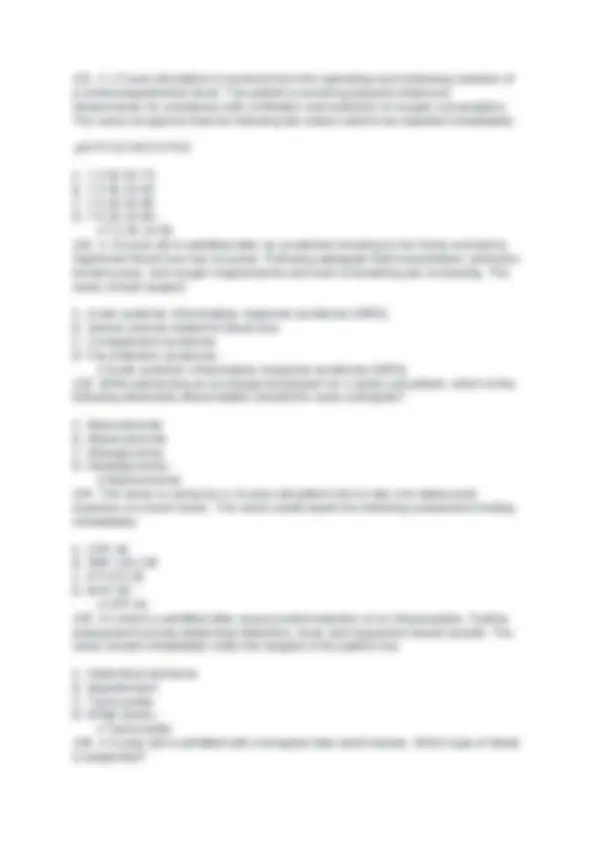
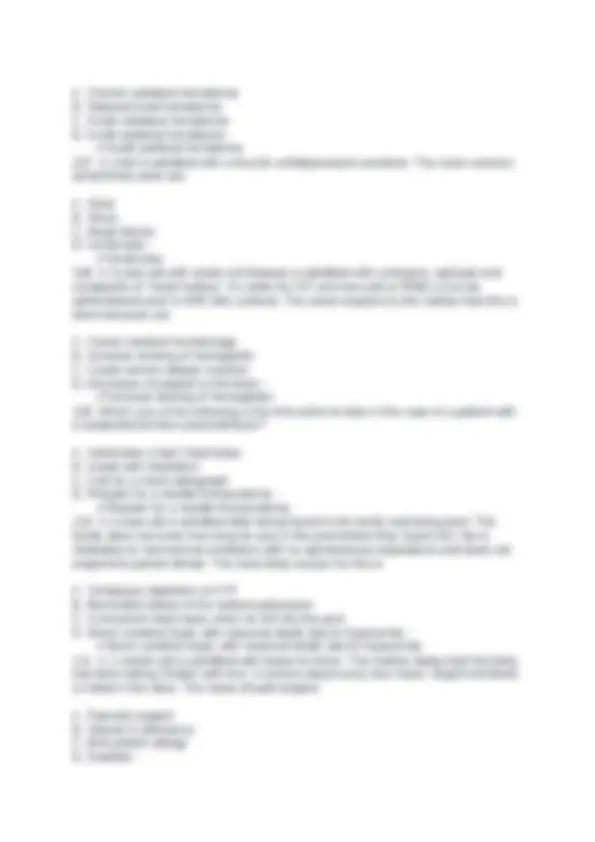
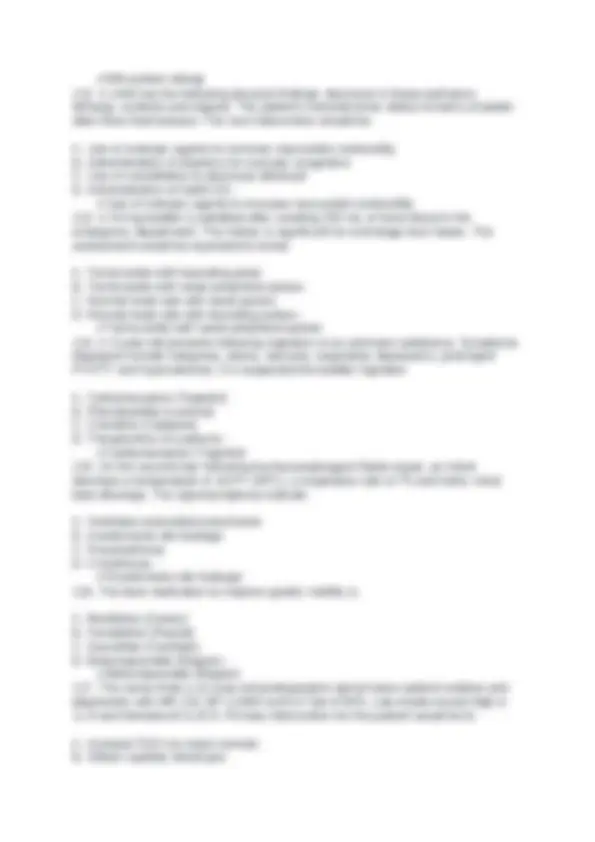
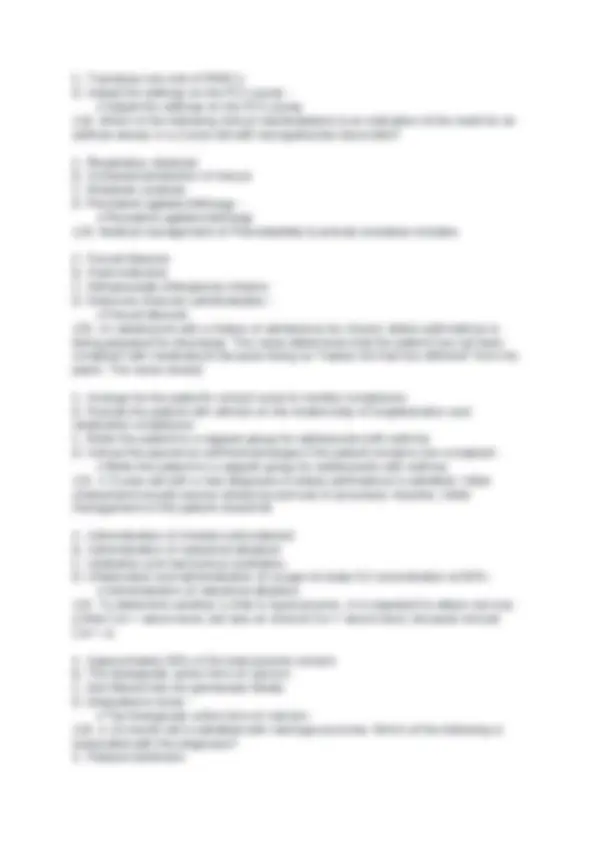
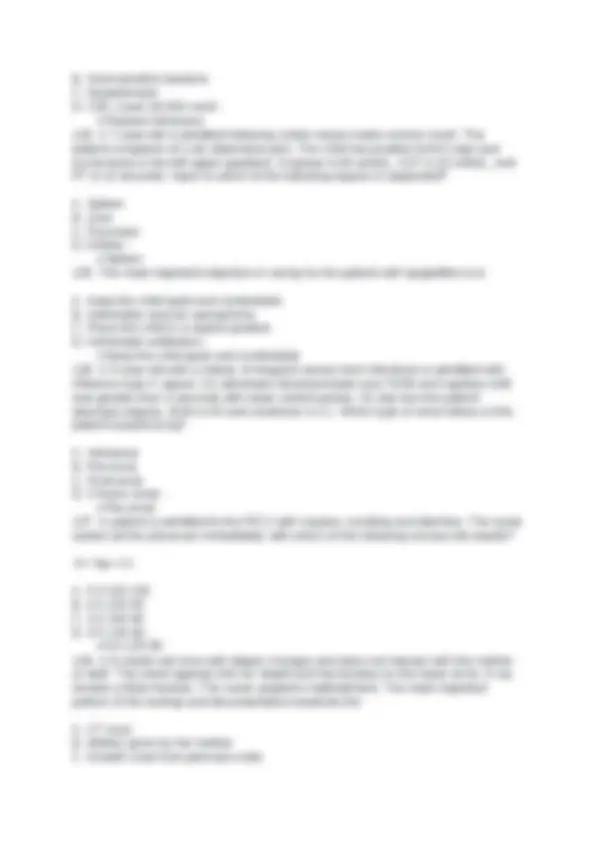
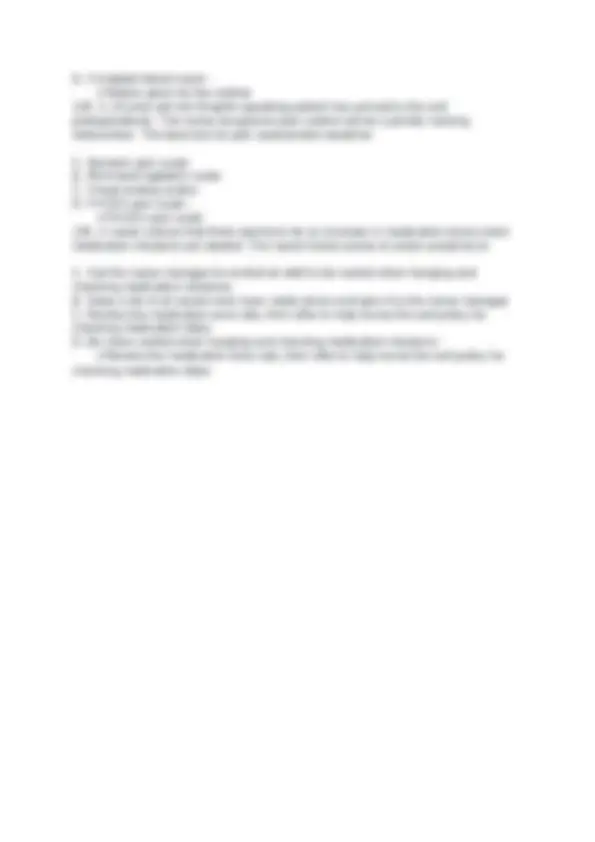


Study with the several resources on Docsity

Earn points by helping other students or get them with a premium plan


Prepare for your exams
Study with the several resources on Docsity

Earn points to download
Earn points by helping other students or get them with a premium plan
Community
Ask the community for help and clear up your study doubts
Discover the best universities in your country according to Docsity users
Free resources
Download our free guides on studying techniques, anxiety management strategies, and thesis advice from Docsity tutors
A comprehensive overview of various treatment measures and procedures in critical care nursing, covering topics such as salicylate intoxication, peep management, and bronchopulmonary dysplasia. It includes multiple-choice questions and answers, making it an excellent resource for students and professionals seeking to enhance their knowledge in this field.
Typology: Exams
1 / 27

This page cannot be seen from the preview
Don't miss anything!




















A. Administration of NaHCO B. Fluid resuscitation C. Racemic epinephrine D. Intubation - ✔Intubation
added to the pump. - ✔Parents must bring the child back to the clinic to have the medicine added to the pump.
D. residual right ventricular outflow obstruction - ✔residual right ventricular outflow obstruction A 4-year-old has been admitted twice in the past six months for status asthmaticus. The parents smell of smoke when they come to the hospital, but state they don't smoke in the house. The most appropriate discharge planning intervention would be to A. discuss with the parents how to avoid asthma triggers at home. B. give the parents literature about smoking cessation treatment and support groups. C. call Child Protective Services to report a medically unsafe home environment. D. remind parents they shouldn't smoke around the child. - ✔give the parents literature about smoking cessation treatment and support groups. A 4-year-old presents with a chief complaint of blood in her urine. A review of the medical records shows multiple admissions for the same symptom. No etiology has been found. The patient is symptomatic only when the mother is present. The most appropriate diagnosis for this patient would be A. Munchausen syndrome by proxy. B. non-accidental trauma. C. physical abuse D. sexual abuse. - ✔Munchausen syndrome by proxy A 13-year-old male with diabetes is admitted after collapsing in class. On admission, he is tachycardic, has shallow respirations, dilated pupils, and is hyperreflexic. The plan of care would be to administer A. glucagon IM. B. naloxone (Narcan IV). C. 50% dextrose IV. D. regular insulin SQ. - ✔50% dextrose IV. The initial therapy for children at risk for pulmonary embolus related to venous thromboembolism from a central venous line (CVL) is A. placement of an inferior vena cava filter. B. administration of anticoagulants. C. immediate removal of the CVL. D. thrombectomy by a surgeon. - ✔administration of anticoagulants In an infant with bronchopulmonary dysplasia (BPD), factors that impair the release of oxygen by negatively affecting oxyhemoglobin dissociation include A. hyperthermia. B. metabolic acidosis C. respiratory acidosis
pH 7. RR 72 pCO2 30 BP 48/Doppler pO2 48 CRT greater than 5 sec. HCO3 16 The patient is intubated and placed on mechanical ventilation at a rate of 20; PIP/PEEP=24/4 cm water; FiO2=100%. Subsequent ABG results show: pH 7. pCO2 28 pO2 50 HCO3 15 The most probable etiology of the patient's cardiopulmonary status is A. Tetralogy of Fallot. B. hypoplastic left heart syndrome. C. persistent pulmonary hypertension. D. diaphragmatic hernia. - ✔hypoplastic left heart syndrome A teenager post cardiac arrest has a new diagnosis of hypertrophic cardiomyopathy. The parents are concerned about what to do if their son collapses again. The nurse's best response would be A. "Now that your son has been diagnosed and treated, you need not worry." B. "Would teaching you CPR help ease your anxieties?" C. "Do you know how to access the EMS system?" D. "I will have your son's cardiologist talk to you." - ✔"Would teaching you CPR help ease your anxieties?" A child is admitted after sustaining a head injury. The most important aspect of the nurse's continuing neurological assessment is A. level of consciousness. B. papillary response. C. motor response. D. assessment of the cranial nerves. - ✔level of consciousness A survey reveals that all of a hospital's nurses feel that the routine 4 a.m. chest x-rays cause an interruption in children's sleep patterns. The best strategy for addressing this issue would be to A. Assemble a work group to discuss the current hospital policy. B. Reschedule all non-emergent 4 a.m. chest x-rays during daytime hours. C. Request an in-service for the radiology department on the effects of sleep deprivation in children. D. Send the results of the survey to the hospital administrator. - ✔Assemble a work group to discuss the current hospital policy The chest x-ray of a patient with status asthmaticus will reveal
A. hyperinflation. B. foreign-body aspiration. C. perihilar infiltrations. D. an elevated diaphragm - ✔hyperinflation Which of the following rhythms is expected one day post cardiac catheterization for repair of an arterial septal defect (ASD)? A. premature atrial contraction B. junctional ectopic tachycardia C. sinus bradycardia D. sinus tachycardia - ✔premature atrial contraction A patient who does not speak or understand English is admitted. Guidelines for using a translator may include A. having the translator ask questions that you don't feel comfortable asking. B. standing next to the translator and as close to the patient as possible. C. providing all of the information, then allowing for translation and asking of questions. D. allowing time for the translator to decode the medical jargon used in the teaching. - ✔standing next to the translator and as close to the patient as possible An infant post cardiac surgery is displaying signs of hypovolemia. The nurse suspects there is an increased insensible fluid loss due to A. decreased activity. B. hypothermia. C. the radiant warmer. D. sedation. - ✔the radiant warmer The primary objective in the treatment of an infant with persistent pulmonary hypertension is to A. maintain the pH level at less than 7.40. B. dilate the pulmonary vascular bed. C. dilate the systemic vascular bed. D. constrict the pulmonary vascular bed. - ✔dilate the pulmonary vascular bed
✔Absence of spontaneous breathing when PaCO2 goes above 60 mmHg
A. WBCs 200/mm B. RBCs 3/mm C. Protein 120 mg/dL D. Glucose 90 mg/dL - ✔Protein 120 mg/dL
B. Turned the head when name was called C. Cried when a nurse entered the room D. Avoided eye contact with the nurse - ✔Avoided eye contact with the nurse
A. "The numbers indicate when the patient is having problems." B. "The numbers help us determine the best treatment." C. "Which numbers on the monitor concern you?" D. "What don't you understand about the monitor?" - ✔"Which numbers on the monitor concern you?"
D. Hypotension, bradycardia and nausea/vomiting - ✔Dry mouth, lethargy and hypotension